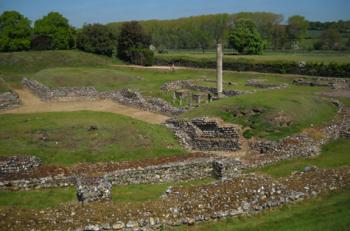Fun day in St. Albans
This item appears on page 15 of the August 2017 issue.
My parents and I travel frequently to London and enjoy day trips on the train. On our May 2017 trip, we visited St. Albans, a small city on the outskirts of London. We had traveled previously to St. Albans and remembered the town’s interesting Roman history and beautiful cathedral.
We decided to visit on a Wednesday, as there is a weekly street market on St. Peter’s Street on Wednesdays and Saturdays, 8:30 a.m.-5:30 p.m. The market includes vendors selling just about anything, from new and used clothing and household items to groceries.
We traveled on a Thameslink train from the St. Pancras International Train Station (Platform B) to the St. Albans City Station. Family off-peak tickets cost approximately £25 (near $32.50) total and allowed us to leave London after 9:30 a.m. and return the same day. The fast train to St. Albans took 15 minutes, while the slow train back to St. Pancras took 30 minutes.
After arriving in St. Albans, we walked for an hour from the City Station to the sites of Verulamium, a former Roman city. The main sites are the Verulamium Museum (St. Michael’s Street), the Roman Theatre (Gorhambury Drive) and the remains of a Roman villa, including a mosaic floor and hypocaust heating system, in Verulamium Park near the museum.
Combination tickets for the museum and theater cost £6.50 (senior, £5). There is no admission fee into the Roman villa.
The museum contains a wealth of information about life in Roman Britain. The theater is the only example of its kind in Britain, and the mosaic floor in the villa is truly spectacular. (Visit www.stalbans museums.org.uk for information on these sites.)
After visiting the Roman sites, we walked back toward the city center to the Cathedral and Abbey Church of Saint Alban. The cathedral is the oldest place of continuous Christian worship in Britain and contains a shrine to St. Alban, a resident of Roman Verulamium, who was martyred after converting to Christianity in the 3rd century. We took the free 1:05 p.m. highlights tour led by a cathedral docent.
The docent explained the history and the present uses of the building and shared insights on the cathedral artwork, including 13th-century wall paintings and numerous stained-glass windows. One particularly interesting ceiling panel depicts white and red roses to commemorate the St. Albans battles during the Wars of the Roses.
Our visit to St. Albans was both educational and fun. It’s a great day trip from London!
DIANE HARRISON
Chesterfield, MO

